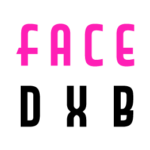
New Diagnostic Test for Autism Spectrum Disorder Introduced by LinusBio
February 12, 2025
In a significant advancement within the field of pediatric healthcare, LinusBio has announced the launch of ClearStrand-ASD, a novel diagnostic test aimed at assisting healthcare providers in ruling out autism spectrum disorder (ASD) in children aged between 1 and 36 months. This groundbreaking initiative was presented at the recent Metabolomics and Human Health Conference GRC held in Ventura, California.
The test operates by analyzing a single strand of hair, which is claimed to hold valuable information regarding an individual’s metabolic processes. According to Dr. Manish Arora, CEO of LinusBio and Vice Chairman of Environmental Medicine and Public Health at the Icahn School of Medicine at Mount Sinai, hair strands serve as a “biological hard drive,” capable of reflecting a person’s exposure to essential nutrients and toxic compounds over time. Through this methodology, researchers have identified specific biomarkers associated with autism, a discovery that facilitated the development of ClearStrand-ASD.
In a series of studies involving 486 children from various countries including Japan, Sweden, and the United States, the test exhibited promising results. It demonstrated a sensitivity of approximately 96% (95% CI, 82%-100%), indicating a strong capacity to predict autism, and a specificity of around 75% (95% CI, 64%-85%), reflecting its ability to effectively rule out the disorder. In recognition of these findings, the U.S. Food and Drug Administration (FDA) granted breakthrough device designation for a related platform, StrandDx-ASD, in 2021.
Recognizing the urgent need for expedited assessments in light of long waiting periods for autism evaluations, LinusBio sought to provide clinicians and families with a reliable rule-out test. Dr. Arora emphasized the necessity for such tools to ensure timely care for children who may otherwise be misallocated into lengthy evaluation processes.
The ClearStrand-ASD test carries a price tag of ,750, which includes a telehealth consultation, test kit, and subsequent follow-up session with a clinician. As the company navigates the intricacies of healthcare coverage, it has received Clinical Laboratory Improvement Amendments (CLIA) authorization in 44 U.S. states, with expectations for nationwide availability by year’s end.
However, expert opinions vary on the efficacy of hair-based testing for autism. Dr. Kathleen Rowland, an associate professor at Rush University Medical College, cautioned against relying solely on such tests for autism diagnosis. She pointed out that the current false-negative rate approximates 18%, indicating that the test could miss one in six children who will ultimately receive an autism diagnosis. Dr. Rowland emphasized that comprehensive diagnostic assessments are essential, and careful evaluation of parental concerns remains paramount in identifying autism.
The introduction of ClearStrand-ASD by LinusBio represents an innovative step towards more accessible autism assessments, but it also highlights the ongoing need for balanced discussions between innovative testing methods and traditional diagnostic approaches. As more data is gathered and the medical community evaluates the performance and utility of such tools, the overarching goal remains the well-being and timely intervention for children with autism spectrum disorder.



